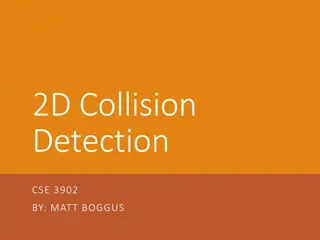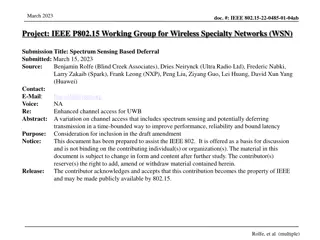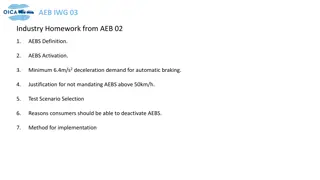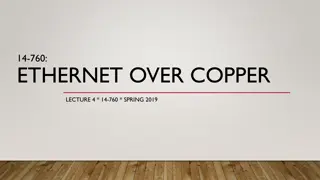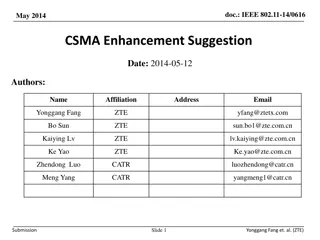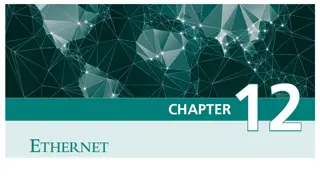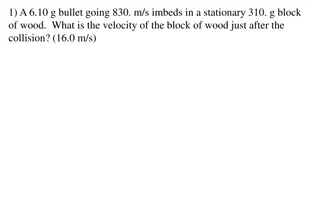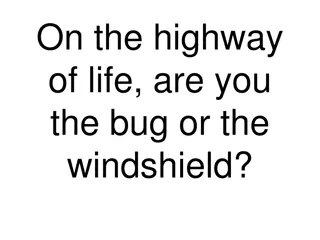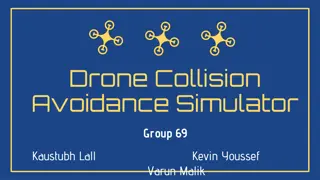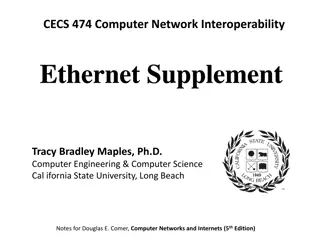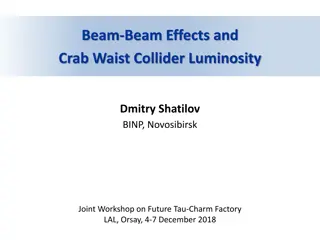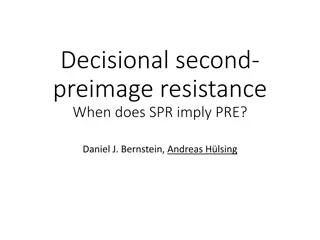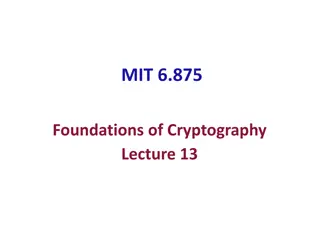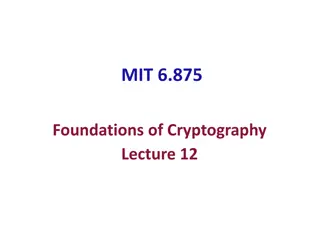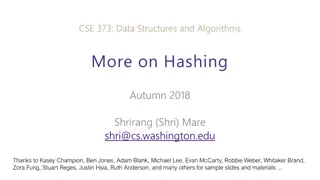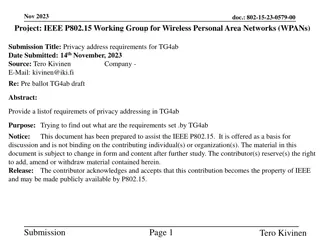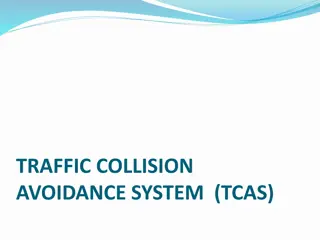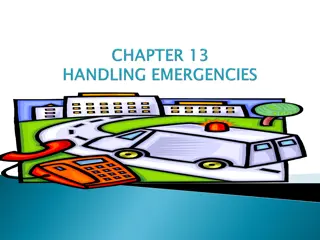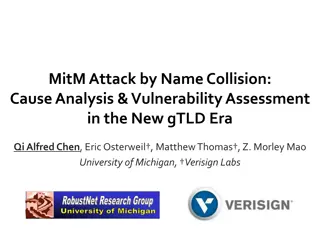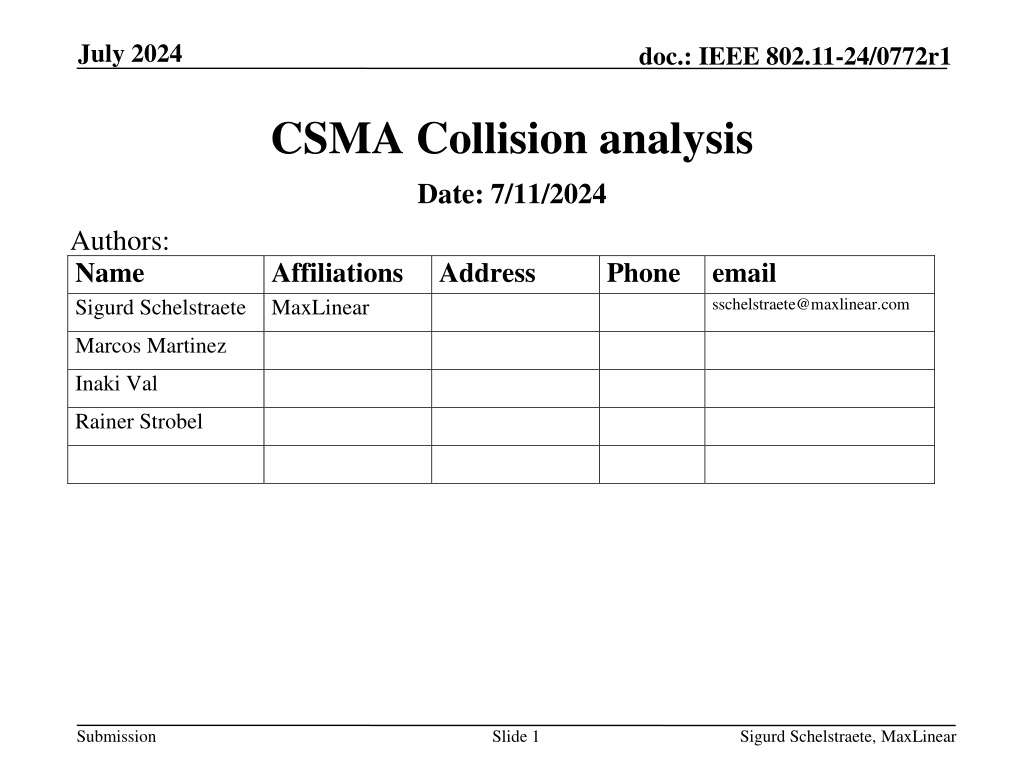
IEEE 802.11 CSMA/CA Collision Analysis Insights
Delve into the collision analysis of CSMA/CA in IEEE 802.11 networks, exploring how collisions impact network latency and throughput. Gain valuable simulation data and observations on collision occurrences, deferral mechanisms, and adaptive contention techniques like AIFS and CW. Understand the basics of Carrier Sense Multiple Access with Collision Avoidance (CSMA/CA) and Enhanced Distributed Channel Access (EDCA) in the context of network performance optimization within IEEE standards.
Download Presentation

Please find below an Image/Link to download the presentation.
The content on the website is provided AS IS for your information and personal use only. It may not be sold, licensed, or shared on other websites without obtaining consent from the author. Download presentation by click this link. If you encounter any issues during the download, it is possible that the publisher has removed the file from their server.
E N D
Presentation Transcript
July 2024 doc.: IEEE 802.11-24/0772r1 CSMA Collision analysis Date: 7/11/2024 Authors: Name Sigurd Schelstraete MaxLinear Affiliations Address Phone email sschelstraete@maxlinear.com Marcos Martinez Inaki Val Rainer Strobel Submission Slide 1 Sigurd Schelstraete, MaxLinear
July 2024 doc.: IEEE 802.11-24/0772r1 Introduction The basic medium access protocol of 802.11 compliant systems (DCF) is based on CSMA/CA (Carrier Sense Multiple Access with Collision Avoidance) Collisions are still statically possible and increase with network load Affecting both network latency and network throughput Goal of this submission is to present some simulation data and observations about collisions in CSMA/CA Submission Slide 2 Sigurd Schelstraete, MaxLinear
July 2024 doc.: IEEE 802.11-24/0772r1 CSMA/CA basics STAs determine the busy/idle state of the medium ( Carrier Sense ) After detecting an idle medium, STAs defer before sending any transmission on the medium Deferral period consists of a fixed backoff (AIFS[AC]) + random backoff Number of slots for random backoff chosen within the Contention Window (CW) During deferral, STAs monitor CCA and end contention if at any time a busy medium is detected STA is allowed to access the medium when the random backoff counter reaches zero Submission Slide 3 Sigurd Schelstraete, MaxLinear
July 2024 doc.: IEEE 802.11-24/0772r1 CSMA/CA basics STAs for which backoff counter has not reached zero can continue counting down from the latest value of the counter for the next contention Submission Slide 4 Sigurd Schelstraete, MaxLinear
July 2024 doc.: IEEE 802.11-24/0772r1 EDCA EDCA specifies AIFS and CW limits per AC Each AC effectively performs independent CSMA/CA AC Traffic Type CWmin CWmax AIFSN AIFS (usec) AC_BK Background 15 1023 7 79 AC_BE Best Effort 15 1023 3 43 AC_VI Video 7 15 2 34 AC_VO Voice 3 7 2 34 Submission Slide 5 Sigurd Schelstraete, MaxLinear
July 2024 doc.: IEEE 802.11-24/0772r1 Collision avoidance adaptive CW Introducing a random countdown reduces the likelihood that two STAs will try to access the medium at the same time However, it remains statistically possible for multiple STAs to access the medium at the same time, because the number of distinct random backoff values is limited by the Contention Window (CW). If a transmitting STAs infers a collision (e.g. through absence of ACK), it will increase (double) the CW for the next medium contention Up to a value CWmax[AC] CW is reset upon completion of successful reception Submission Slide 6 Sigurd Schelstraete, MaxLinear
July 2024 doc.: IEEE 802.11-24/0772r1 Observations on Collision Avoidance CW is only increased for STAs that experience a collision. It does not move the whole network to a different CW. A collision event can result in a lot of lost airtime After a successful transmission, the transmitting STA reverts back to the original CW window, which may not be appropriate for the network overall Some ACs severely limit the value of CWmax In highly congested networks collisions may still have non- negligible impact Submission Slide 7 Sigurd Schelstraete, MaxLinear
July 2024 doc.: IEEE 802.11-24/0772r1 Simulations Network simulation to assess performance 1 AP, N STAs with full-buffer uplink traffic N: 1, 2, 5, 10, 20 Link: MCS 7, 1SS Collisions are assumed to lead to loss of the packet Submission Slide 8 Sigurd Schelstraete, MaxLinear
July 2024 doc.: IEEE 802.11-24/0772r1 Simulation results Collisions (and resulting degradation of network throughput) are significant in congested networks AC_VO and AC_VI relatively more impacted Submission Slide 9 Sigurd Schelstraete, MaxLinear
July 2024 doc.: IEEE 802.11-24/0772r1 How well does Collision Avoidance work? To evaluate the effectiveness of the adaptive CW, we simulate performance for different values of Cwmax for a network with 20 contending STAs Adaptive CW helps mitigate the impact of collisions in AC_BE Submission Slide 10 Sigurd Schelstraete, MaxLinear
July 2024 doc.: IEEE 802.11-24/0772r1 AC_VI and AC_VO CA is less effective for AC_VI and AC_VO due to limits in CWmax Submission Slide 11 Sigurd Schelstraete, MaxLinear
July 2024 doc.: IEEE 802.11-24/0772r1 Increasing CWmax for AC_VO and AC_VI Increased CWmax for AC_VO and AC_VI could further improve performance Submission Slide 12 Sigurd Schelstraete, MaxLinear
July 2024 doc.: IEEE 802.11-24/0772r1 Experiment: Fixed CW per network What if CW was fixed and set network-wide, not by individual STAs? The same value of CW is used all the time (no adaptive increases) CW set based on network-wide conditions Different network loads would have different optimal CW Submission Slide 13 Sigurd Schelstraete, MaxLinear
July 2024 doc.: IEEE 802.11-24/0772r1 Fixed CW per network Optimal fixed CW would significantly outperform current CSMA/CA However, incompatible with current CSMA/CA and more difficult to manage Submission Slide 14 Sigurd Schelstraete, MaxLinear
July 2024 doc.: IEEE 802.11-24/0772r1 Conclusions We reviewed current CSMA/CA and evaluated collision avoidance Simulation results provide some insights into the effectiveness of current collision avoidance scheme Collisions remain a problem within CSMA/CA in highly congested networks A centrally managed CW can improve performance, but may be impractical in reality In [1], we ll explore a scheme to enhance the collision avoidance in CSMA Submission Slide 15 Sigurd Schelstraete, MaxLinear
July 2024 doc.: IEEE 802.11-24/0772r1 References [1] CSMA with enhanced Collision Avoidance, IEEE 802.11-24/0773 Submission Slide 16 Sigurd Schelstraete, MaxLinear


